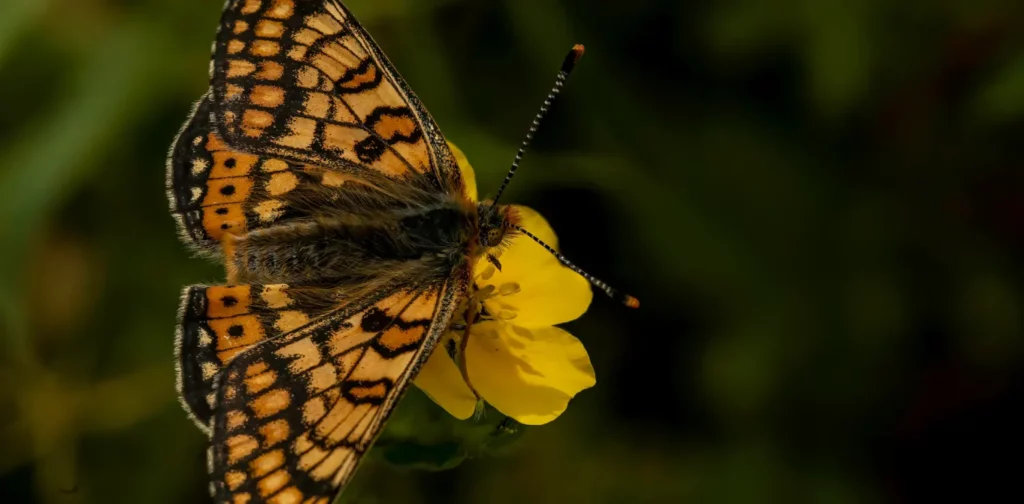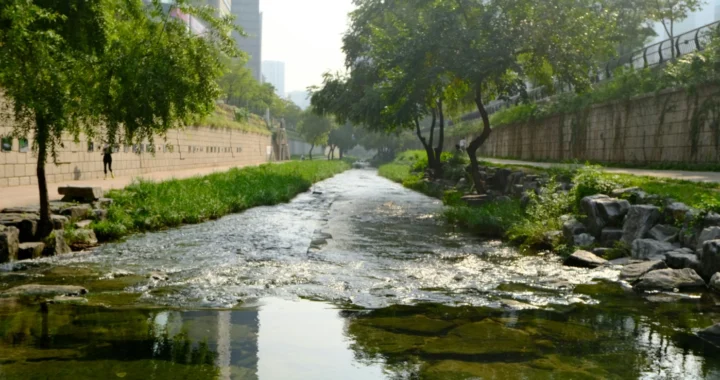3 Good News from Animal Conservation Efforts Across the Globe

Marsh fritillary butterfly | Photo by Akbar Nemati on Unsplash
We are facing a plethora of environmental issues due to climate change and human activities. One of which is a global biodiversity crisis. For better or worse, the wellbeing and survival of humans are inexplicably linked with the planet’s health and other species that live on it. With this urgency in mind, scientists, activists, and communities are working to halt biodiversity decline. Here are three positive developments from animal conservation efforts worldwide:
- Marsh Fritillary Butterfly in South Wales, the UK
The marsh fritillary butterfly (Euphydryas aurinia) population in Europe has been steadily declining for at least 25 years. The decline is linked to the loss of its habitat, the marshy grassland and rhôs pasture due to agricultural intensification.
In late 2020, the Initiative for Nature Conservation Cymru (INCC) received a license to collect 80 marsh fritillary caterpillars from the wild to breed and rear them in captivity. The caterpillars were then released onto Llantrisant Common. The flying season of 2022, in May and June, saw marsh fritillary butterflies flying over the area for the first time since the 1990s.
Besides the INCC staff, volunteers and local students from Ysgol Gymraeg Castellau have also contributed to the project. According to INCC CEO Rob Parry, the next phase would be to restore more of the butterfly’s natural habitat.
- Iberian Lynx in Spain and Portugal
The Iberian lynx (Lynx pardinus) is a medium-sized wild cat from the Iberian Peninsula in southwestern Europe. In the 20th century, the population plummeted because they were considered vermin and, therefore, hunted. The sharp drop in the rabbit population—their main diet—and habitat loss also contributed to the Endangered status of the Iberian lynx.
In 2024, the IUCN conservation status of the Iberian lynx has officially improved from Endangered to Vulnerable. The population has increased from 62 mature Iberian lynxes in 2001 to 2,021 in 2023. Since 2010, more than 400 of them have been reintroduced to their habitats in Spain and Portugal.
According to the IUCN, “Conservation efforts have focused on increasing the abundance of its prey, the Endangered European rabbit (Oryctolagus cuniculus), protecting and restoring Mediterranean scrub and forest habitat, and reducing deaths caused by human activity.”
- Naked Carp in China
The naked carp (Gymnocypris przewalskii) is a scaleless fish species endemic to the Qinghai Lake in China. Decades ago, the naked carp population had declined sharply due to overfishing as villagers from Xinquan struggled with low crop yields and poor living conditions. This decline also severely impacted the lake’s ecosystem.
As a conservation effort, the local government has been banning naked carp fishing in Qinghai Lake and rivers upstream since 2001. This ban will last until the end of 2030.The ban has resulted in a massive comeback of the naked carp population in Qinghai Lake. From about 2,500 tonnes in 2002, Qinghai Lake reserved approximately 120,000 tonnes of naked carp in 2023. Furthermore, the naked carp’s migration journey has become a sight to behold, boosting tourism in Gangca County.

Join Green Network Asia Membership
Amidst today’s increasingly complex global challenges, equipping yourself, team, and communities with interdisciplinary and cross-sectoral insights on sustainability-related issues and sustainable development is no longer optional — it is a strategic necessity to stay ahead and stay relevant.
Join Now
Nazalea Kusuma
Naz is the Manager of International Digital Publications at Green Network Asia. She is an experienced and passionate writer, editor, proofreader, translator, and creative designer with over a decade of portfolio. Her history of living in multiple areas across Southeast Asia and studying Urban and Regional Planning exposed her to diverse peoples and cultures, enriching her perspectives and sharpening her intersectionality mindset in her storytelling and advocacy on sustainability-related issues and sustainable development.


 Racing with the Rapid Glacier Loss Globally
Racing with the Rapid Glacier Loss Globally  Understanding the Impacts of Rising Temperatures on Early Childhood Development
Understanding the Impacts of Rising Temperatures on Early Childhood Development  Closing the Sacrifice Gap: Mainstreaming Climate Behavior for Meaningful Change
Closing the Sacrifice Gap: Mainstreaming Climate Behavior for Meaningful Change  Addressing the Elephant in the Forest: The Necessity of Disaster Recovery Plans for Wildlife
Addressing the Elephant in the Forest: The Necessity of Disaster Recovery Plans for Wildlife  Weaving the Thread Between the Last Elephant and the Floods in Sumatra
Weaving the Thread Between the Last Elephant and the Floods in Sumatra  Bringing Buried Rivers Back to Life Through Daylighting
Bringing Buried Rivers Back to Life Through Daylighting